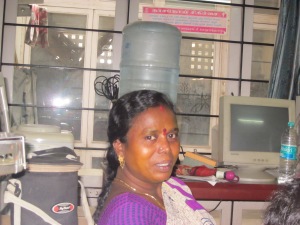Why has MDR TB become such a threat to public health? Should the private sector shoulder all the blame?
The recently released WHO Global Tuberculosis Report 2012 throws up some contradictions. It claims that The Millennium Development Goal (MDG) target to halt and reverse the TB epidemic by 2015 has already been achieved. TB mortality rate has decreased 41% since 1990 and the world is on track to achieve the global target of a 50% reduction by 2015. However, it also goes on to warn that multi-drug resistant TB (MDR-TB) is a cause for concern. In terms of numbers, according to the Stop TB Partnership there could be as many as 440000 new cases of MDR TB across the world. The Global TB report says that India, China, the Russian Federation and South Africa have almost 60% of these cases.
Closer to home, India has the highest burden of TB in the world and accounts for around one fifth of the global incidence. Out of 9.4 million new TB cases globally, 2 million are estimated to have occurred in India. Around 280,000 people succumbed to TB in 2009. It is estimated that close to 1000 people die from TB everyday in India.
India has 64000 MDR TB patients (RNTCP Annual Report 2012). Experts however opine that the figure could actually be much higher. Only 4237 cases out of these were notified and 2967 cases were put on treatment according to the Global TB report. Here is the contradiction. TB is an entirely preventable and curable disease. We have what is acknowledged to be among the best national TB control programmes in the world. If our TB control programme was really as efficient as we think it is, why would so many cases of MDR TB be amongst us? Especially considering this is a condition that arises when patients develop resistance to the basic drugs because they drop out of treatment mid-way, or contract itfrom a person already infected with MDR TB? Why is MDR TB making such bold inroads into our country? The private sector has been roundly blamed for the increase of MDR TB in India. I attempted to find out ground up, how true this was.
The TB sector in India is riddled with some problems that prevent it from being completely efficient. Despite the existence of the ambitious Revised National Tuberculosis Control Programme (RNTCP), it is an established fact that doctors in the private sector are most often the first point of contact for a person who is ill. Dr Mukund Uplekar, Medical Officer, Stop TB Department, WHO says, “The problem does not begin as TB; it begins as fever and cough and people don’t rush to the nearest TB facility when they fall ill. Therefore the private sector is the first vital touch point.”
For K (20) too, the private sector was the first point of contact when she fell ill. A diminutive figure heavily swathed in woolens, she lives in a dark, dank house in New Delhi at the end of a bylane dotted with puddles of slush and little mounds of garbage. She is on treatment for MDR TB and angrily recounts that when she suffered from frequent fevers and coughs she consulted several doctors in the private sector. Each of the doctors, in turns, prescribed tablets and syrups, which cost a lot of money but did not cure her. After a year or so she was referred to the government TB programme where she tested positive for TB. The DOTS supervisor at the TB dispensary where K is being treated, says, “We detected that she had MDR TB and changed her treatment when she continued to be sputum positive even several months after she was put on DOTS. She has completed one year of MDR TB treatment and has another year to go.” K’s case and several others like hers that this writer came across, illustrate that management of TB in the private sector leaves a lot to be desired and is also often the cause for MDR TB.
India has the largest private health sector in the world, with 60-80% of health care coming under this category. Private health care includes both qualified and unqualified practitioners.The quality of treatment provided by private healthcare providers for TB is not standardized as per international guidelines. Diagnosis is a problem. The Indian private sector is largely unregulated, and weak regulation results in rampant use of useless diagnostics, and prescriptions of incorrect TB treatment regimens. A recent study from Mumbai, by the Hinduja Hospital, published in Public Library of Science, showed 106 doctors prescribing 63 different drug combinations for TB (while there is only one recommended TB drug combination).
Cases of mismanagement of TB in the public sector too are common. Vedavalli (58), from Pondicherry, Southern India, died a few months ago after prolonged but unsuccessful treatment for TB. Her daughter Radha laments the loss of her mother, “My mother first went to a private doctor for her cough and fever. He diagnosed her with TB and sent us to the government facility, because we would get better and cheaper treatment there.” She can barely prevent herself from breaking down, “The doctors at the government chest clinic treated her for months without any success. My mother continued to get sicker and finally died because her lungs were damaged beyond repair.”
Radha, on her own volition, had sought a second opinion while her mother was on treatment and not showing any progress. Dr Sowmya Swaminathan, Director, TRC, Chennai, says, “When Radha brought her mother to us we tested her blood for levels of the anti-TB drugs Rifampicin, INH and PZA. They were all very low on the first occasion and then showed erratic levels. The drug quality was also checked and found to be alright. She was probably not absorbing the drug properly because of malnutrition or other reasons. Once we increased the dose and made it daily treatment, she responded immediately. She was doing well but suddenly died.”
Radha asks some tough questions. “Why did I have to seek a second opinion? Was it not the job of the doctors treating my mother to refer her? Is this what we get for trusting the government programme?”
Dr Ranganath, a private practitioner in Bangalore who has been practicing general medicine for over 30 years recalls the case of a patient with TB who was forced to avail treatment from the private sector because there was a price attached to every test, every drug and every visit he made to the local government TB hospital – all of which should actually have been free of cost.”
There is obviously a lot of confusion in the TB sector, both with regard to diagnosis and treatment. While the private sector needs to be brought under regulation, it is also mandatory that government facilities get their act together. Gaps in treatment and corruption in the treatment facilities need to be tackled firmly. Blessina Kumar, Vice Chair, Stop TB Partnership, and TB/HIV activist reiterates firmly, “RNTCP has a top down, and not rights based approach. We have to revisit the RNTCP and make changes if required to ensure that the last person who needs treatment gets it with the least red tape.”
Dr Madhukar Pai, a TB researcher, says, “Wherever a TB patient in India seeks care, he is not sure of getting the right diagnosis and treatment. When the patient goes to a private doctor (or unqualified practitioners), there are very good chances that there will be a wrong diagnosis, wrong medication and delays that could prove fatal.” He adds, “Patients with TB are not routinely tested for drug susceptibility by RNTCP before being started on medication. Second-line drugs for MDR-TB are not widely available. There are now excellent rapid molecular tests for MDR-TB but the RNTCP is yet to scale them up. These are very powerful causes for the spread of MDR TB.”
Dr Pai also recommends that RNTCP should feel ownership towards all patients, whether they come through the public system or not. Regulation of the private sector, enforcement of the governmental order that requires all TB cases to be notified, enforcement of the ban on serological antibody TB tests, and a business model at the grassroots level, which incentivizes private doctors for referrals – all these are urgently required for prevention of MDR TB .
TB already causes an estimated 100 million workdays loss due to illness. The country will also incur a loss of nearly US$ 3 billion in indirect costs and US$ 300 million in direct costs (source: RNTCP). MDR TB will exacerbate this problem. It’s time to stop blaming the private sector alone and to recognize that the responsibility for TB control is a collective one.
Bharathi Ghanashyam
Head-Communications, The Akshaya Patra Foundation
This piece is directly accessible on http://journalistsagainsttb.wordpress.com/2013/02/11/why-has-mdr-tb-become-such-a-threat-to-public-health-should-the-private-sector-shoulder-all-the-blame/


